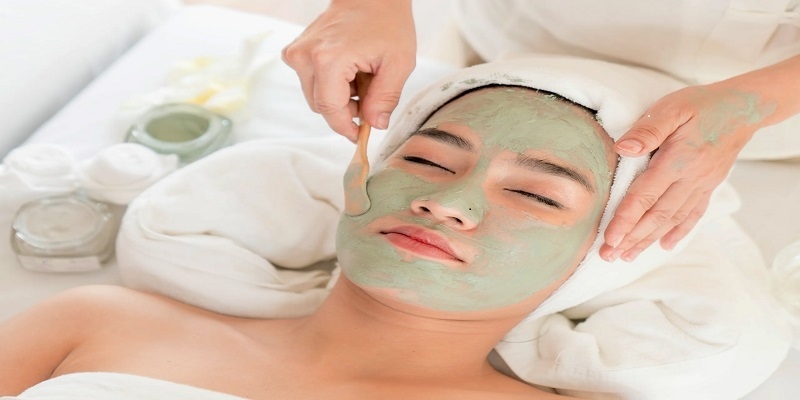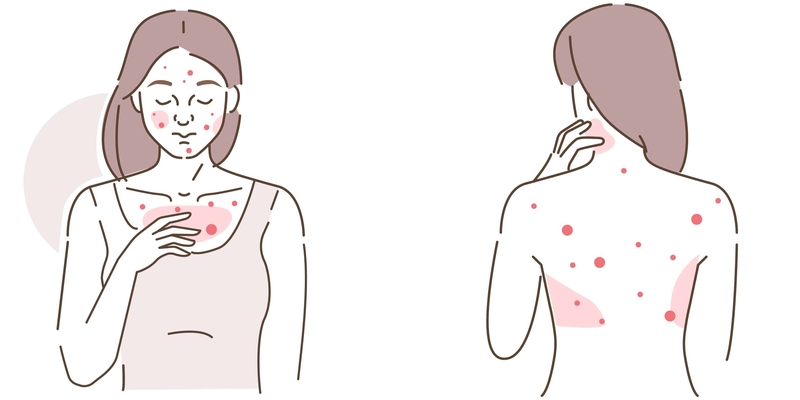Hyperpigmentation, a prevalent dermatological issue, knows no age or skin type boundaries. It manifests as darkening specific skin patches, causing self-consciousness and frustration. Nonetheless, by comprehending Hyperpigmentation and exploring the treatment avenues, one can rediscover their confidence and attain a more harmonious complexion.
This all-encompassing guide embarks on a journey to elucidate the origins, variations, and productive remedies for Hyperpigmentation. Doing so equips you with the essential insights required to effectively tackle this skin concern and embrace the radiant skin you deserve.
Understanding Hyperpigmentation
Hyperpigmentation is a skin issue that arises when specific areas of the skin develop a darker hue than the surrounding skin because of an overproduction of melanin, the pigment accountable for skin and hair color. This condition can develop due to various factors and affects individuals from diverse skin tones and ethnic backgrounds.
Common Causes of Hyperpigmentation
The common causes of Hyperpigmentationinclude:
Sun Exposure
Prolonged and unprotected sun exposure is a leading cause of Hyperpigmentation. Ultraviolet (UV) rays stimulate melanin production, causing the skin to darken to protect itself from further damage. This results in sunspots, freckles, and uneven skin tone.
Post-Inflammatory Hyperpigmentation
Post-inflammatory hyperpigmentation (PIH) develops in response to skin inflammation or injury, which can be caused by conditions like acne, burns, or insect bites. The affected area undergoes darkening as an inherent aspect of the skin's restorative journey.
Hormonal Changes
Hormonal fluctuations during pregnancy, menopause, or while taking birth control can lead to a form of Hyperpigmentation called melasma. It often presents as dark patches on the face.
Genetic Factors
Some individuals may be genetically predisposed to Hyperpigmentation, making them more susceptible to developing dark spots and patches.
Types of Hyperpigmentation
Let’s dive in to know about the various types of Hyperpigmentation.
Melasma
Melasma, often called the "mask of pregnancy," manifests as brown or grayish-brown patches predominantly on the face, most notably on the cheeks, forehead, and upper lip. This condition is closely tied to hormonal changes and is more prevalent in women, especially during and after pregnancy.
Solar Lentigines
Solar lentigines, commonly recognized as sunspots or age spots, are small, dark blemishes that emerge on areas of the skin exposed to sunlight, such as the hands, face, and chest. These benign pigmented lesions are primarily induced by prolonged exposure to harmful UV rays.
Post-Inflammatory Hyperpigmentation (PIH)
Post-inflammatory Hyperpigmentation (PIH) doesn't discriminate by skin type and is characterized by the formation of dark spots or patches following skin injuries or inflammation. Common triggers for PIH include acne breakouts and burns. This condition can affect individuals of all backgrounds and ages.
Freckles (Ephelides)
Freckles, typically genetically determined, manifest as small, concentrated patches of melanin. These pigmented spots vary in light to dark brown shades and predominantly emerge in sun-exposed skin regions.
Effective Treatment Options
Addressing Hyperpigmentation necessitates a comprehensive strategy, with the chosen treatment contingent on the variety, extent, and root causes. Here are some effective treatment options:
Sunscreen and Sun Protection

One of the most critical aspects of treating and preventing Hyperpigmentation is Sun Protection. Regular broad-spectrum Sunscreen with a high SPF can help prevent further darkening of existing spots and forming new ones. Additionally, wearing protective clothing, such as wide-brimmed hats and long sleeves, can shield the skin from harmful UV rays.
Topical Skin Lighteners
Many over-the-counter skin-lightening products contain active ingredients like hydroquinone, retinoids, kojic acid, and vitamin C. These products inhibit melanin production and promote skin cell turnover, gradually fading hyperpigmented areas. It's essential to follow your Dermatologist's recommendations when using these products.
Chemical Peels
Chemical peels entail carefully applying an acid solution to the skin's surface. This process exfoliates the top layer and encourages fresh, unblemished skin regeneration. Various kinds of peels, with varying strengths, are at your disposal, making milder options ideal for effectively addressing Hyperpigmentation.
Laser Therapy
Advanced laser treatments, like fractional laser and intense pulsed light (IPL), precisely target and disintegrate surplus melanin in hyperpigmented regions. Dermatologists commonly administer these procedures, necessitating several sessions to achieve the most favorable outcomes.
Microdermabrasion
Microdermabrasion, a non-invasive technique, employs a specialized machine to exfoliate the skin's surface gently. This process effectively eliminates the outer layer of dead skin cells while stimulating collagen production. It is particularly advantageous for addressing mild cases of Hyperpigmentation.
Topical Retinoids
Topical retinoids, such as tretinoin, are derived from vitamin A and are renowned for their remarkable capacity to enhance skin texture and effectively diminish Hyperpigmentation. These compounds achieve this by accelerating cell turnover and fostering collagen synthesis.
Chemical Sunscreens
Some chemical Sunscreens are engineered explicitly with active components that intercept the UV rays responsible for triggering melanin production. These tailored Sunscreens act as an additional layer of defense, significantly strengthening your protection against the development of Hyperpigmentation.
Professional Skin Care Products
Dermatologist-recommended, top-tier skincare products play a pivotal role in managing Hyperpigmentation effectively. Seek products infused with skin-loving antioxidants, hydrating hyaluronic acid, and skin barrier-enhancing niacinamide to bolster your skin's overall health and resilience.
Consult a Dermatologist

Before initiating any Hyperpigmentation treatment regimen, it is paramount to seek the expertise of a board-certified Dermatologist. These professionals possess the skills to diagnose your unique skin condition precisely, identify the most appropriate treatment modalities, and offer valuable counsel regarding aftercare and ongoing maintenance.
Moreover, Dermatologists are well-equipped to conduct a comprehensive evaluation that can exclude any underlying health issues that may be exacerbating your Hyperpigmentation, ensuring a holistic approach to your skin's well-being.
Conclusion
In conclusion, Hyperpigmentation is a common concern impacting self-esteem and overall skin health. However, the right knowledge and treatment can achieve a more even complexion. From daily Sun Protection to professional treatments, various options are available to address Hyperpigmentation effectively. Commence your path towards achieving healthier, more radiant skin by consulting a dermatologist and crafting a personalized treatment strategy to meet your needs.







